1000-krona banknote
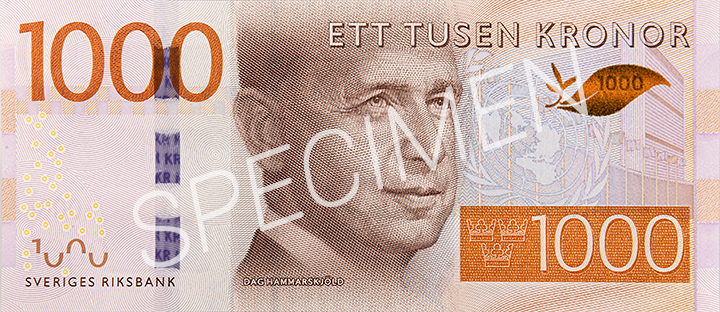
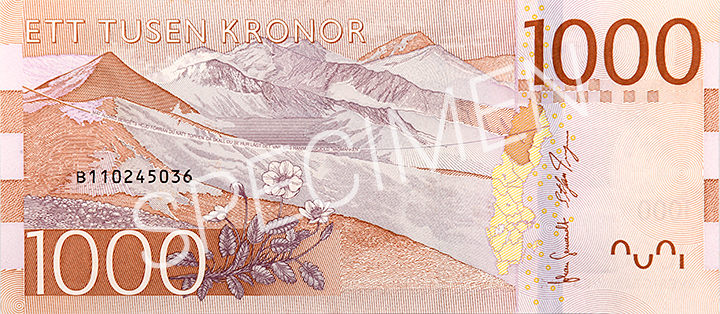
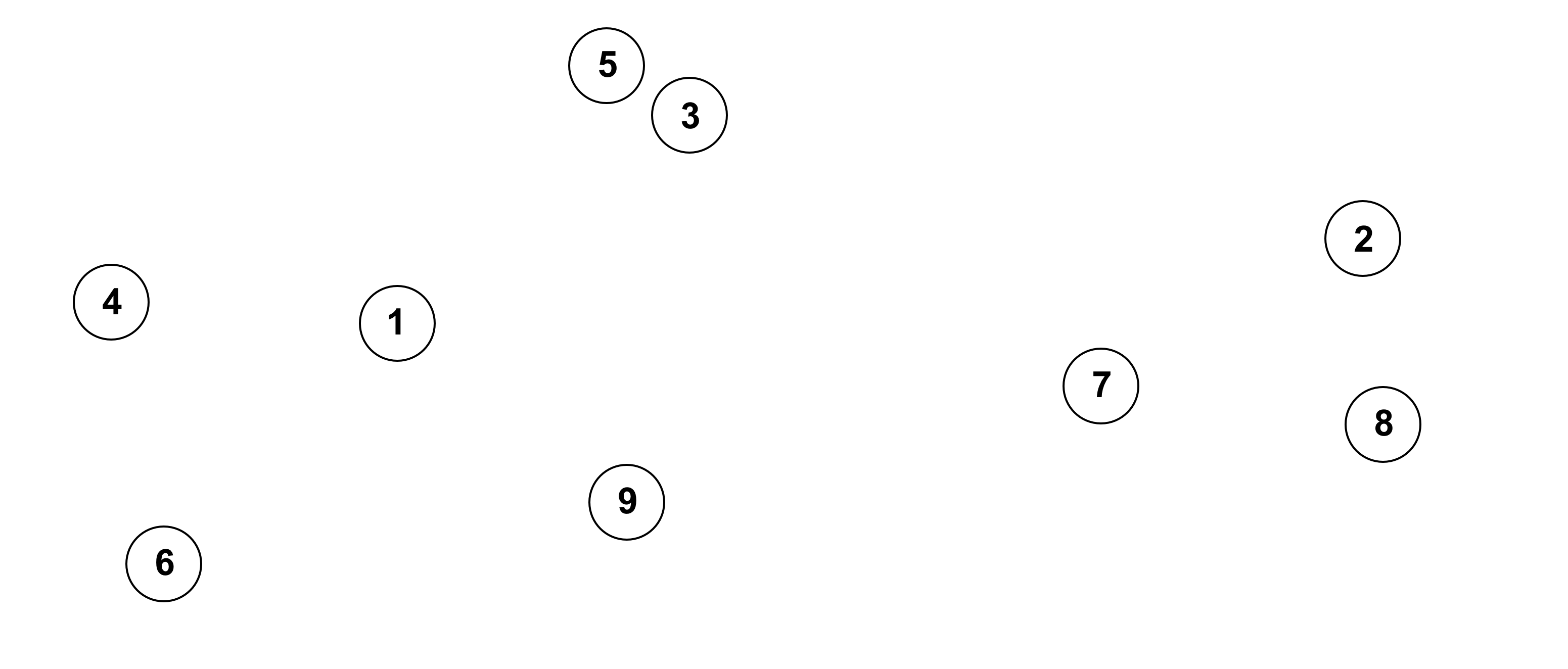
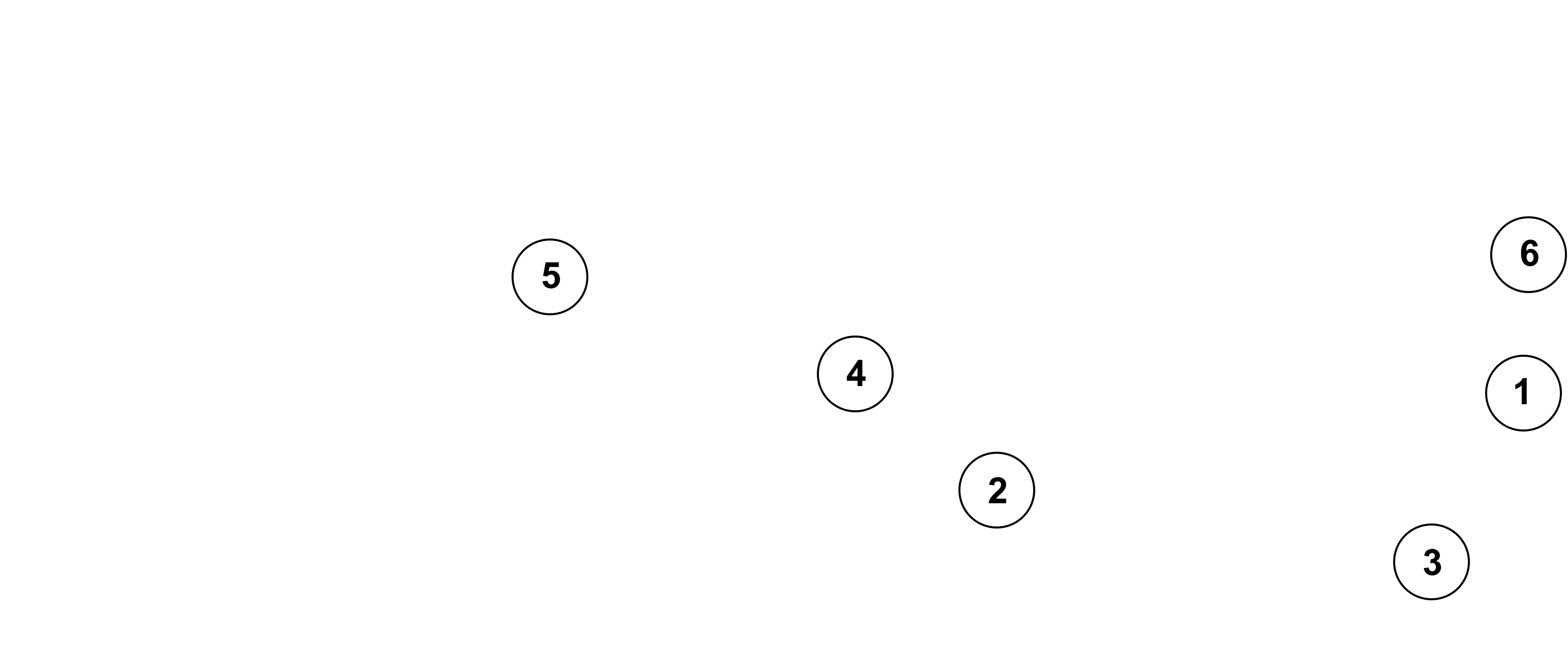
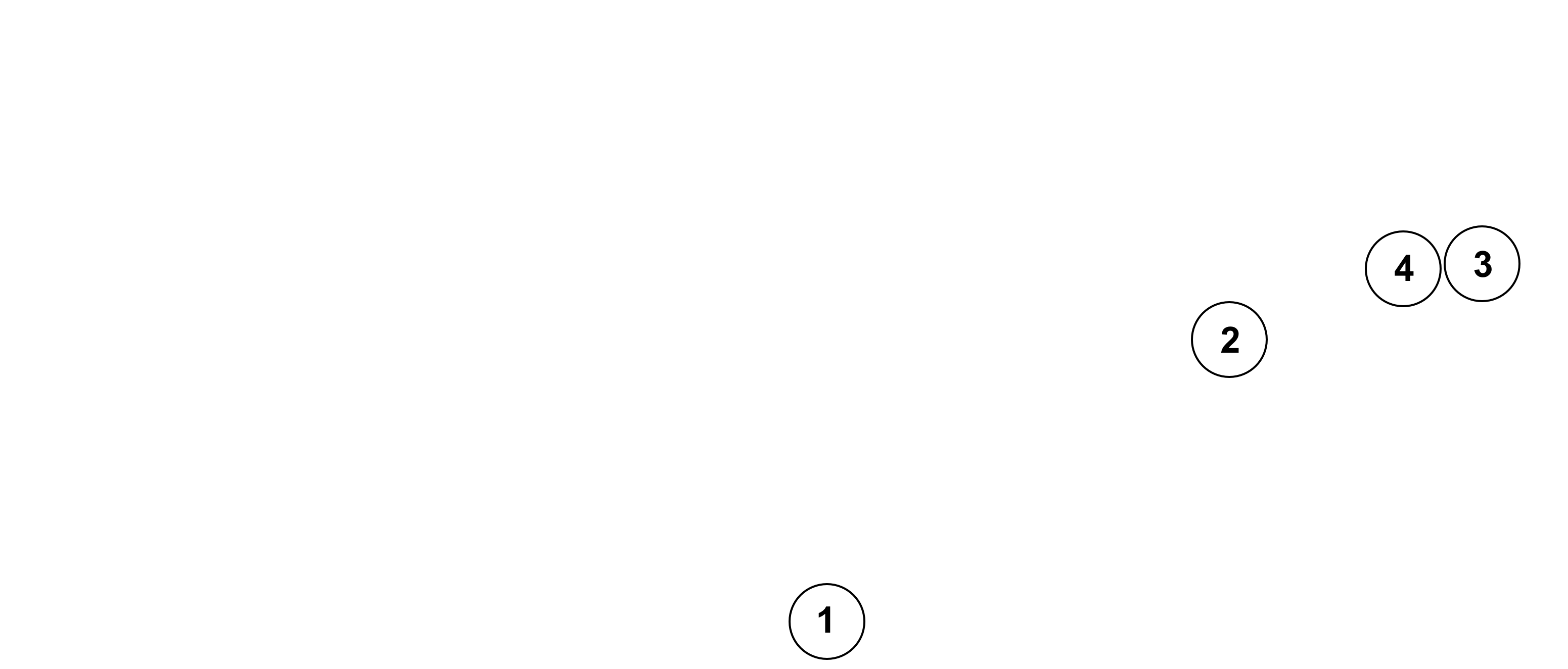
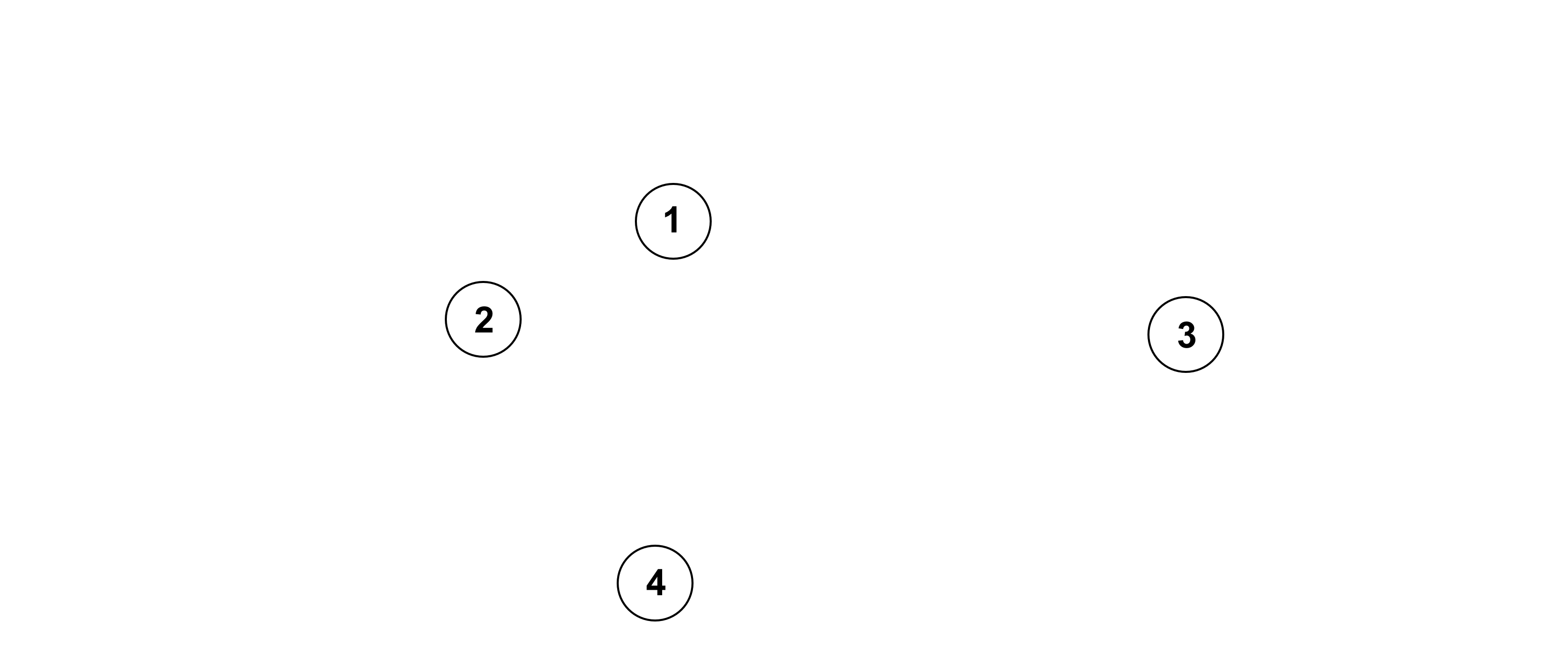
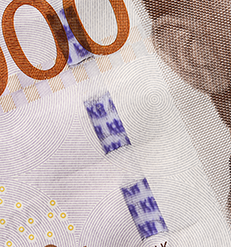
1. Security strip
Vertical purple security strip with three windows. The windows feature images that move and alternate motif between KR and a royal crown when you tilt the banknote. The placement of the security strip may vary by up to 2 cm.
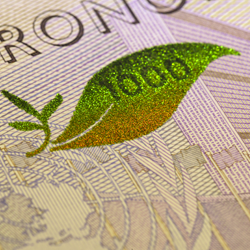
2. Colour-shifting image
Colour-shifting image linked to the person portrayed on the banknote, in this case an olive branch. The banknote's denomination, 1,000, is also shown in the image. The image and the denomination gradually change colour between gold and green when you tilt the banknote.
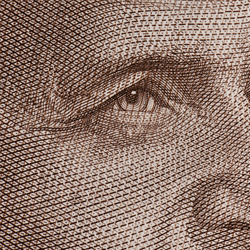
3. Intaglio print
Intaglio print, which makes the paper feel like a banknote and gives it a noticeable raised surface. Run your thumb over it or scrape lightly with a fingernail. Intaglio printing has been used for the portrait, denominations and the text SVERIGESRIKSBANK.
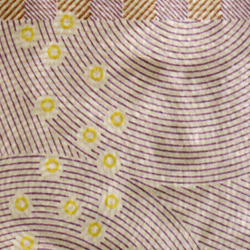
4. Watermark
Watermark with the banknote's denomination and portrait that are visible when you hold the banknote to the light. The denomination appears significantly lighter than the rest of the paper.
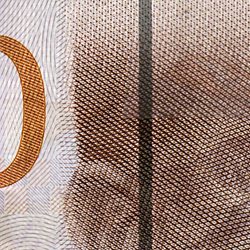
5. Security thread
Security thread embedded in the banknote paper. Visible as a dark line when you hold the banknote up to the light.
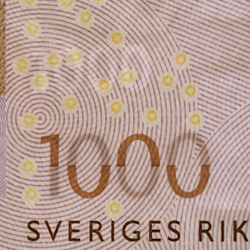
6. See-through picture
A pattern that, together with a matching pattern on the reverse, forms the denomination when you hold the banknote to the light.
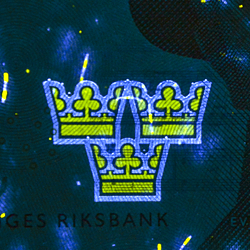
7. UV image
UV image (three crowns) that fluoresces (glows) yellow and blue under ultraviolet light.
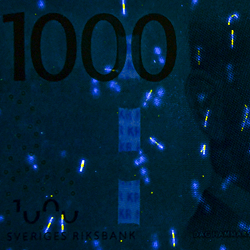
8. UV fibres
UV fibres spread across the entire banknote that fluoresce (glow) yellow and blue under ultraviolet light.
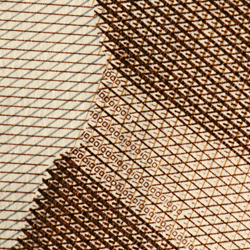
9. Micro- and minitexts
The denomination repeated several times, placed by Dag Hammarskjöld’s collar: 100010001000100010001000100010001000100010001000100010001000 Text by the denomination on the right side, repeated several times: SVERIGESRIKSBANK SVERIGESRIKSBANK SVERIGESRIKSBANK
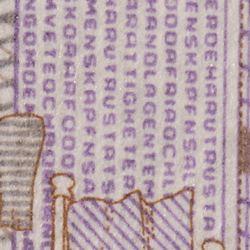
9.2 Micro- and minitexts
Text on the gable of the UN building (All human beings are born free and equal in dignity and rights. They are endowed with reason and conscience and should act towards one another in a spirit of brotherhood. UNs Universal Declaration of Human Rights, Article 1), written with no spaces or punctuation and repeated several times: ALLAMÄNNISKORÄRFÖDDAFRIAOCHLIKAIVÄRDEOCH RÄTTIGHETERDEHARUTRUSTATSMEDFÖRNUFTOCH SAMVETEOCHBÖRHANDLAGENTEMOTVARANDRAIEN ANDAAVGEMENSKAPFNSALLMÄNNAFÖRKLARINGOM DEMÄNSKLIGARÄTTIGHETERNAARTIKEL1 Text on the short edge, repeated several times: SVERIGESRIKSBANK SVERIGESRIKSBANK SVERIGESRIKSBANK
1. Watermark
Watermark with the banknote's denomination and portrait that are visible when you hold the banknote to the light. The denomination appears significantly lighter than the rest of the paper.
2. Security thread
Security thread embedded in the banknote paper. Visible as a dark line when you hold the banknote up to the light.
3. See-through picture
A pattern that, together with a matching pattern on the obverse, forms the denomination when you hold the banknote to the light.
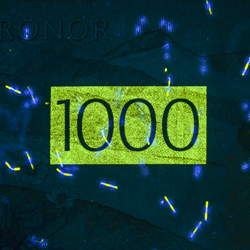
4. UV image
UV image (1,000) that fluoresces (glows) green under ultraviolet light.

5. UV fibres
UV fibres spread across the entire banknote that fluoresce (glow) yellow and blue under ultraviolet light.
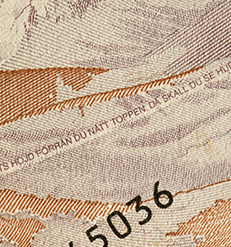
6. Minitexts
Text by the symbolic polar circle (in translation: Never measure the height of a mountain until you have reached the top. Then you will see how low it was. Dag Hammarskjöld, Markings): MÄT ALDRIG BERGETS HÖJD FÖRRÄN DU NÅTT TOPPEN. DÅ SKA DU SE HUR LÅGT DET VAR. DAG HAMMARSKJÖLD ”VÄGMÄRKEN” Text by the map, repeated several times: SVERIGESRIKSBANK SVERIGESRIKSBANK SVERIGESRIKSBANK Text on the short edge, repeated several times: SVERIGESRIKSBANK SVERIGESRIKSBANK SVERIGESRIKSBANK
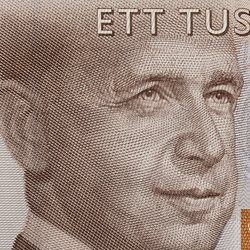
1. Dag Hammarskjöld
Dag Hammarskjöld (1905–1961) was Secretary-General of the United Nations 1953–1961 and Member of the Swedish Academy from 1954. He died in an aircraft crash in what is now Zambia in 1961 and was posthumously awarded the Nobel Peace Prize in the same year. Portrait engraved after a photograph by the Canadian photographer Yousuf Karsh, publicised in Time magazine on 22 August 1960.
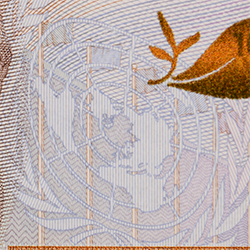
2. The emblem of the United Nations
On 24 October 1945, the Charter of the United Nations entered into force and the United Nations was formed. Since 1948, United Nations Day has been celebrated at the Headquarters of the United Nations and around the world.
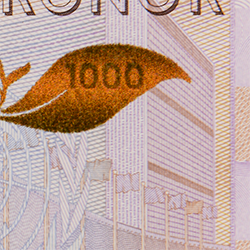
3. UN Headquarters
The United Nations Headquarters complex in New York.
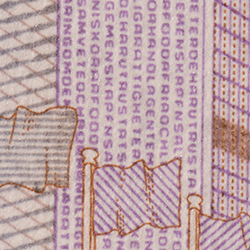
4. Human Rights
Minitext that can be read with the aid of a magnifying glass (All human beings are born free and equal in dignity and rights. They are endowed with reason and conscience and should act towards one another in a spirit of brotherhood. UNs Universal Declaration of Human Rights, Article 1): Alla människor är födda fria och lika i värde och rättigheter. De har utrustats med förnuft och samvete och bör handla gentemot varandra i en anda av gemenskap. FNs allmänna förklaring om de mänskliga rättigheterna, artikel 1.
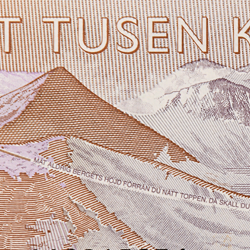
1. Laponia – World Heritage
Mountain motif from Lappland after a photograph taken by Claes Grundsten on 24 July 1998 from the northern summit of Sarektjåhkkå, looking north-west over the Sarektjåhkkå massif. The pointed summit to the left is Gávabákte and the one on the far right is Niják. The motif is located within Sarek National Park and the Laponian Area, a UNESCO World Heritage Site.
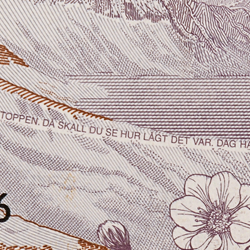
2. Markings
Symbolic polar circle with minitext that can be read with the aid of a magnifying glass (in translation: Never measure the height of a mountain until you have reached the top. Then you will see how low it was. Dag Hammarskjöld, Markings): Mät aldrig bergets höjd förrän du nått toppen. Då ska du se hur lågt det var. Dag Hammarskjöld, Vägmärken.
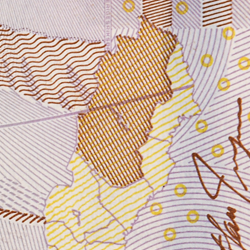
3. Dag Hammarskjöld’s Lappland
Map of the province of Lappland, whose nature greatly interested Dag Hammarskjöld
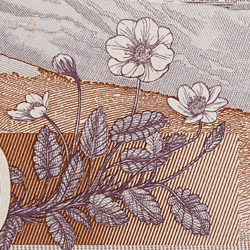
4. Mountain avens
The provincial flower of Lappland, the mountain avens or white dryas.
Facts 1000-krona banknote
Obverse motif: UN Secretary-General and Member of the Swedish Academy Dag Hammarskjöld
Reverse motif: Lappland, an area of natural beauty of great interest to Dag Hammarskjöld
Measures: 154 x 66 millimetres
Thickness: 125 micrometres +/- 10%
Colour: Grey-brown
Will be introduced: 2015
Banknote paper: Manufactured of cotton fibres that are not fluorescent, which is to say they do not emit any light under ultraviolet light (other types of paper may emit a bluish glow).
Banknote numbers: The letters indicate the year in which the banknote was printed. A = 2013, B = 2014 etc. The two first digits indicate where on the printing sheet the banknote was printed. The final seven digits are a serial number.
Valid from 1 October 2015.
